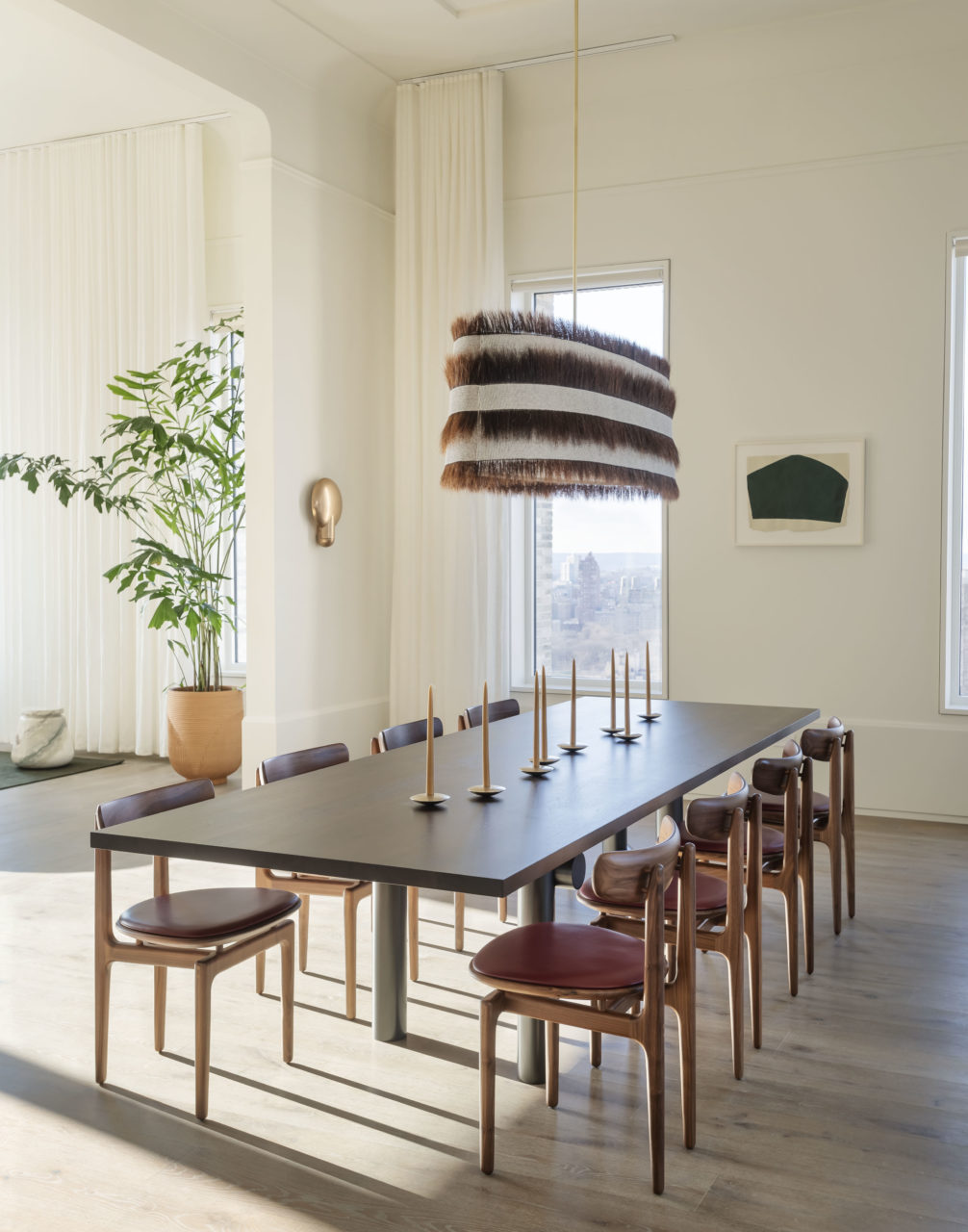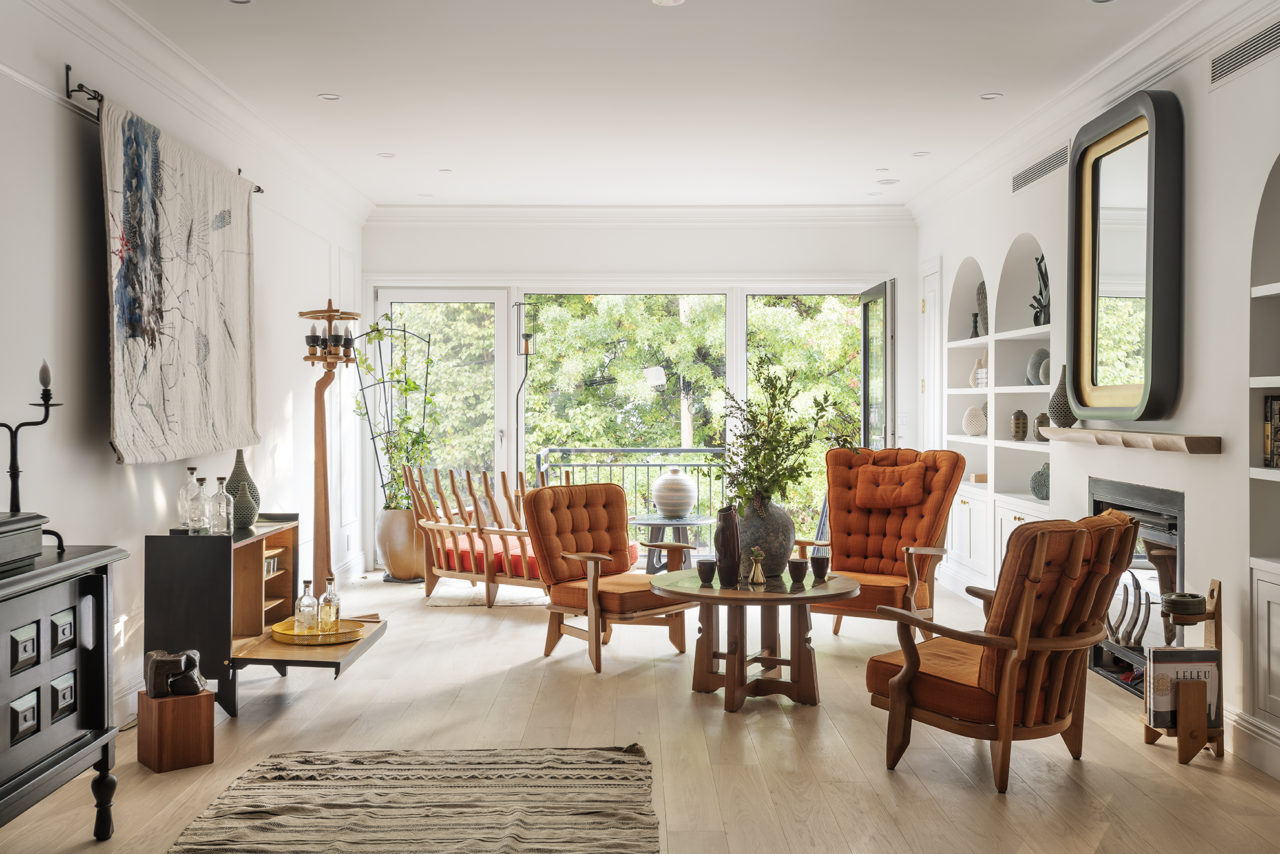Design showrooms often suffer from white cube syndrome. The “white cube”—as christened by Brian O’Doherty in a three-part Artforum essay in 1976—is an environment in which a curator or gallerist presents objects, generally art, against a backdrop of featureless white walls. In this type of space, it’s believed, viewers can appreciate the items on their own formal terms, without the distractions of color, decoration, or expressive architecture.
But the white cube poses challenges for works of design, which by their very nature demand interaction and context (and, in most cases, inspire hopes that they will be sold). In a design showroom, the hallmarks of white cube syndrome are Danish stools set on eye-level platforms, conceptual clusters of pendant lighting, and the worst offender: the chair wall.
Fortunately, a cohort of designers, gallerists, and manufacturers is taking a new approach to showrooms, transforming them into distinct, character-driven spaces. Some are even embracing the possibilities of digital interiors, creating showcases that are accessible from anywhere in the world.


One of these reformers is Susan Clark, who founded her New York City–based company, Radnor, in 2016 after years of working for collectible design platforms such as The Future Perfect. Eschewing the storefront model, Clark sets up entire apartments as showrooms for her line of furnishings and accessories, called Radnor Made, as well as pieces by the designers she represents.
(Already, the Radnor Made collection includes a full apartment’s worth of design, from a leather-wrapped bed by Adam Rogers to a veined-stone table by Clark herself.) In March, she opened a 4,000-square-foot apartment in New York’s Carnegie Hill neighborhood, embellishing it with works by Loïc Bard, Egg Collective, and others. Cocurated by architect Elizabeth Roberts, the showroom occupies the entire floor of a new condominium building. For Clark, whose trappings tend to emphasize craft and materiality, these setups help show the livability of the products. “My trade client needs a contextualized space for the private client to understand how to utilize more sculptural or conceptual products,” she said. But Radnor’s spaces aren’t selling only sofas and side tables: They’re also selling the apartments themselves, which double as model units for the newly constructed buildings.

Guillaume Coutheillas, the founder of bicoastal marketing and design house frenchCALIFORNIA, also offers these refined spaces for his developer clients. But unlike Clark, Coutheillas is neither a designer representative nor a manufacturer. Instead, he’s a marketer working with a designer’s playbook. His company offers soup-to-nuts branding for real estate projects—logos and websites also fall in its wheelhouse—and Coutheillas sees the design of a sales gallery or a model residence as a natural extension of that work.
“It has to have a residential feel, but it’s also presented as an exhibition,” he said. To create these units, Coutheillas often partners with collectible design galleries, which offer the furnishings on loan. That’s a win for them, too: The designs are for sale, so the apartments function as satellite galleries. And, he said, “it benefits the developers because they get an incredible showroom using inventory that the project budget couldn’t necessarily afford.” A recent collaboration with the traveling gallery Gabriel & Guillaume and Cueto Art Advisory included millions of dollars’ worth of art and design to sell units in SHoP’s supertall tower, 111 West 57th Street in Manhattan.


While Clark and Coutheillas install wares in different architectural gems, Elena Frampton, the founder of interior design and advisory group Frampton Co, has a permanent unconventional showroom to call her own. Three years ago, she purchased a shingle-style building (now called The Barn) in Bridgehampton, New York. Compared with her Manhattan flagship, which follows a traditional showroom format, she said, the Bridgehampton space can transform and make an of-the-moment statement: “The Barn is a place where it’s truly just about our vision and what we want to express.” This past winter, that meant wrapping the space in a marigold burlap curtain, and bringing in witty furnishings and accessories like a dolphin-covered chair from the Campana Brothers and a floral chandelier by Arthur Golabek. (The gallery Friedman Benda was a partner.)
But especially since the start of the pandemic, some designers have been pushing boundaries of conventional show spaces entirely by going digital. The Black Artists + Designers Guild (BADG), for instance, has staked out virtual territory through the Obsidian Virtual Concept House, which went live earlier this year. Rendering an imagined home of a Black family in the Oakland Hills area of Oakland, California, it showcased the work of 23 BADG members, including Cheryl R. Riley, Linda Allen, and Cornelius Tulloch. This format, BADG founder Malene Barnett said, “facilitated unrestricted expression and engagement.”
That doesn’t mean Obsidian’s reality is only virtual. Like Coutheillas’s, Clark’s, and Frampton’s projects, the home shows how design comes to life when presented holistically and in context. According to Barnett, “We wanted this to be something that could be real and position it as a way to live.”
Header image: Interior design and advisory group Frampton Co. regularly exhibits furniture collections and art objets in a Bridgehampton, New York, barn belonging to founder Elena Frampton (Joshua McHugh)
